JOURNEY WITH JESSICA
Coffee Hour— the 8th Sacrament
Coffee hour is intended to be a joyful experience of community after the worship service. It’s time to catch up, meet new people, and have some snacks before heading off to the next activity. It can become a catalyst for community engagement, informal brainstorming and project updates. Coffee hour can be wonderful for some, but it is the most dreaded church activity for others, specifically many with disabilities, neurodivergence, or social anxiety.
So how do we make coffee hour a more welcoming place for more people? First let’s look at the space— can everyone get to coffee hour? If the location is not accessible, could you change the location? Next, look at flow—can people with wheelchairs and walkers get through or is it a traffic jam filled with obstacles? Encourage pushing in chairs and being aware of the space.
Consider tables and chairs. Does everyone stand, grouped together, milling about? This can be incredibly anxiety provoking for many, physically unfeasible for others, and intimidating for newcomers. If there are tables and chairs, are they only occupied by the few who can’t manage mingling? Informal mingling has its benefits- there is a fluidity and flexibility- but it leaves out people who physically cannot negotiate, struggle to hear, or become overwhelmed in chaotic environments.
Personally, I’ve found the family style coffee hour, with tables and chairs, to be the most welcoming and accommodating for my disabilities, but it requires an atmosphere of openness and hospitality. Come alongside people, especially people with mobility challenges and newcomers and invite them to a table. Make sure they aren’t alone and know they belong. Encourage members to branch out and sit with different people. Possibly offer adult coloring pages, stim toys, or an activity for those who might not be as comfortable with small talk. It could also be useful to have a quiet zone or sensory room for people to escape too.
Lastly, let’s talk food. Allergies are a thing. The most common allergies are dairy, eggs, peanuts, wheat (gluten), soy, tree nuts, shellfish, fish, and sesame. However, different people are allergic to different things. Ingredient lists are important. If items come in prepackaged containers, keep the packaging available to be scanned. Try to make sure the ingredient label isn’t destroyed in the process of opening. Including an ingredient list alongside any home cooked foods makes me, as someone allergic to corn and corn products, feel loved. It’s important to ask about allergies because allergic reactions to foods like nuts can be extreme to the point where someone can react from traces of nut dust in the air. Individuals with celiac’s disease also react to cross contamination. Some churches have chosen to go nut free. My church buys pre-packaged gluten free snacks. At the same time, fruit and veggie trays or cheese platters shouldn’t be understated—they are straightforward foods I know I can eat without much thought.
My personal dream for coffee hour is for everyone to feel they are welcome and belong just as they are. With a little attention, we can take the necessary steps and begin to realize the inclusivity of Christ’s Banquet Feast.
Bridge Blogger Jessica Thompson
Categorised in: Journey with Jessica
